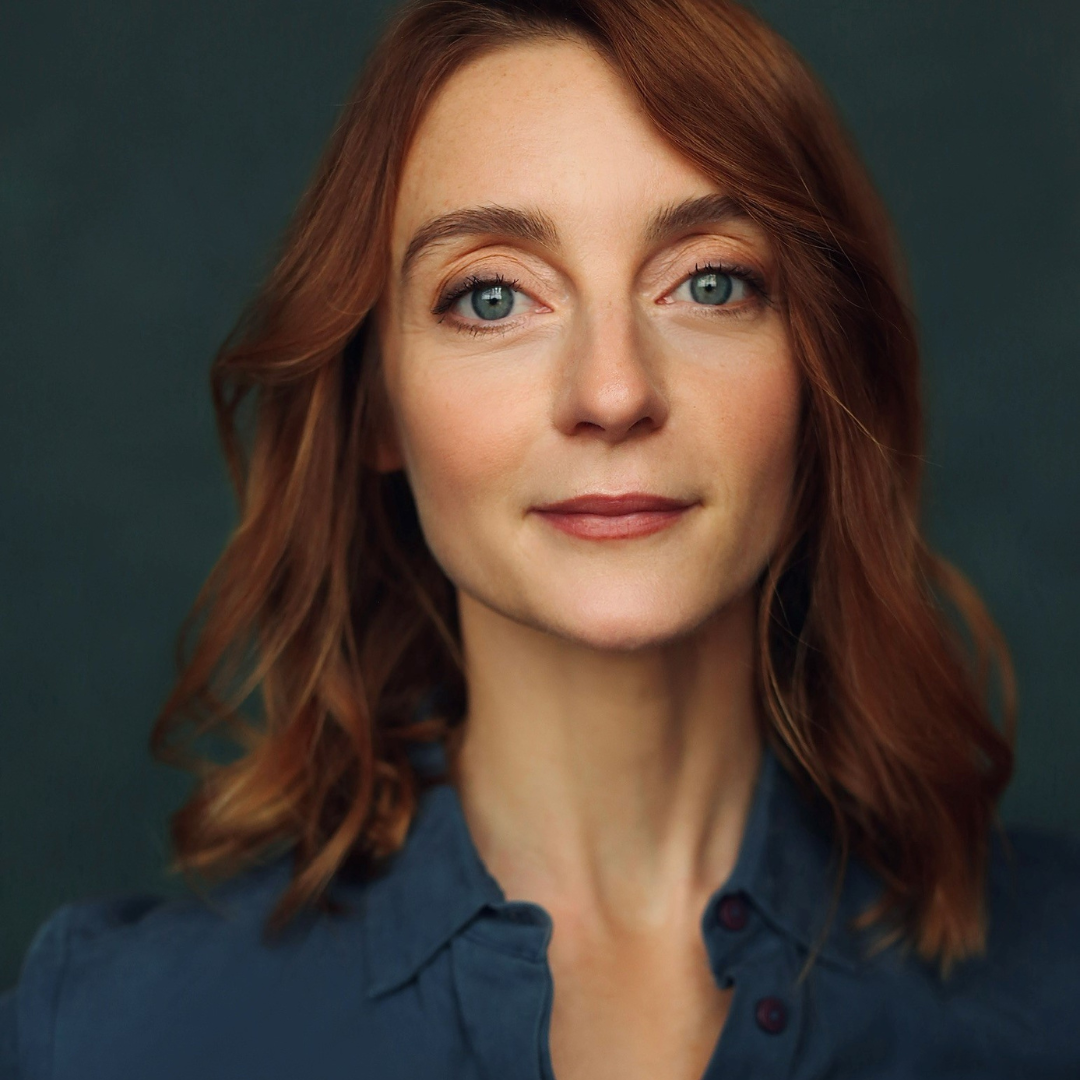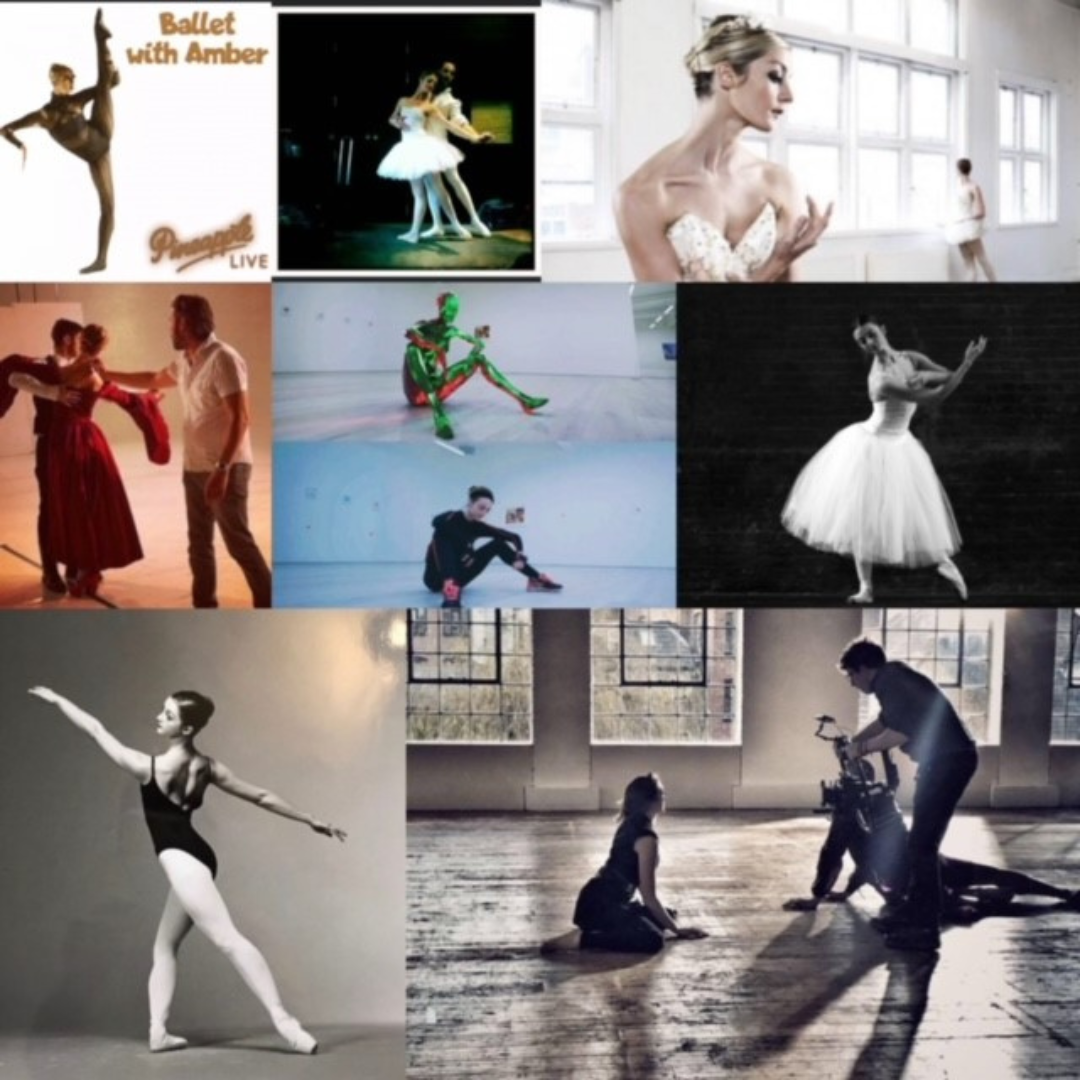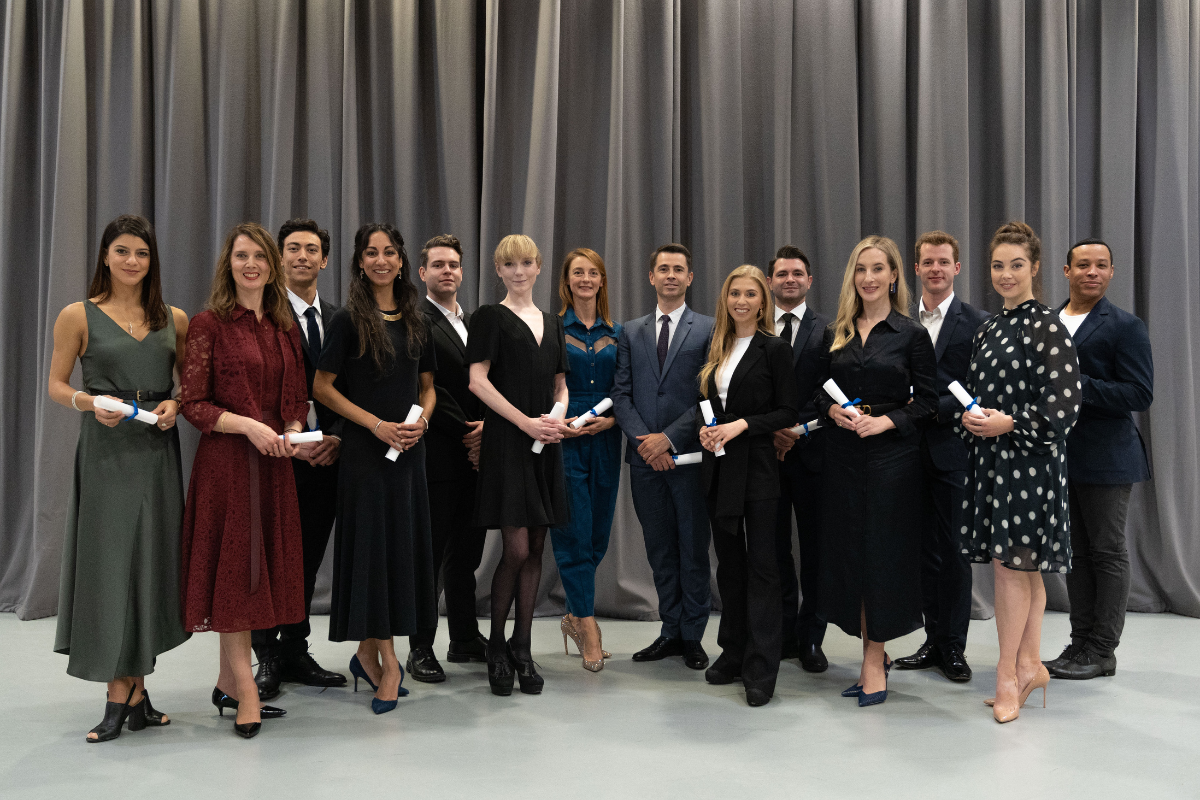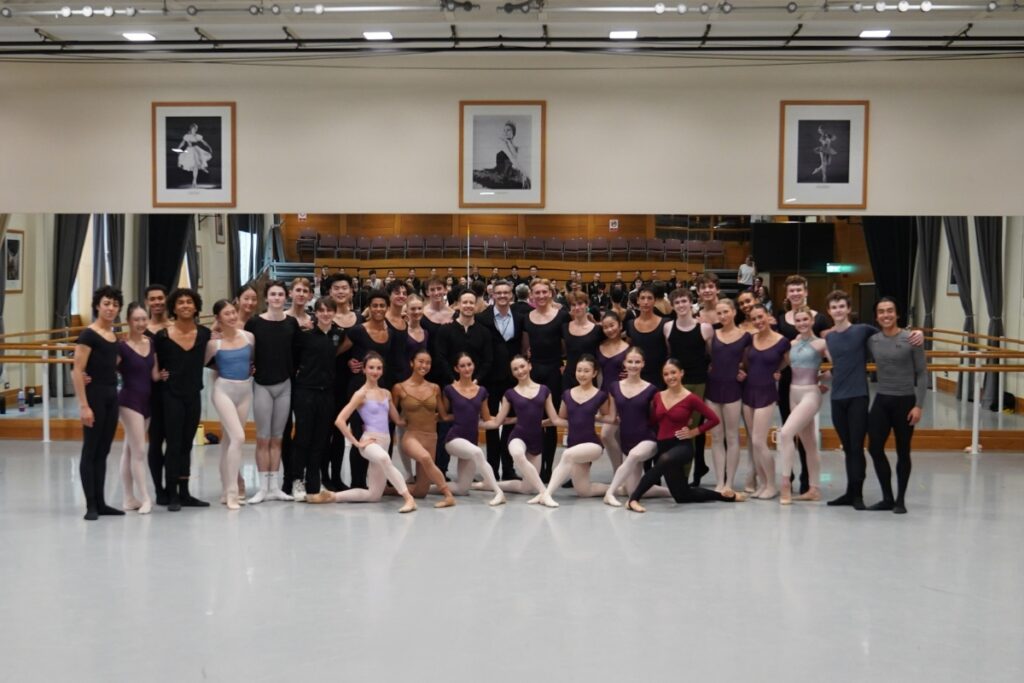Finding euphoria in performing and teaching – in conversation with Diploma graduate, Amber Doyle
From dance, opera and acting to commercials, music videos and film, Amber Doyle has had a colourful career. In October 2022, she added another qualification to her growing list of skills spanning almost every arts discipline, graduating with a Diploma of Dance Teaching from The Royal Ballet School.
With applications for The Royal Ballet School’s Diploma of Dance Teaching opening this Friday, we had the pleasure of speaking with the effervescent and passionate graduate Amber Doyle. Amber shared her pathway to dance teaching, her inspirations, and key learnings she took from the course into her career.
Looking at your CV, you’ve achieved extraordinary things throughout your career in dance, musical theatre and acting. Can you tell me about your background?
I trained at a lot of different schools. I went to Urdang, The Royal Ballet School Upper School, and then to Central School of Ballet, my main vocational training school, from which I graduated at 18 and went off to dance.
My first job was Phantom of the Opera; I always loved doing everything, like ballet, singing, acting, and they took over a new production to Copenhagen, where I worked for about two years. I then went to Malmo and worked for the Malmo Musick Theater, performing in various opera ballets. I returned to London and did more musical theatre, performing in The Opera Show, but I was always the classical ballet dancer within the realm of the production. I also spent a year on a cruise ship, which I absolutely loved, but it was one of the hardest things I’ve ever done. The dancing was out of this world; we did five shows a week, and the amount of choreography you had to learn was insane. I did that for a year and then returned and went back into Phantom [of the Opera], and I then started going into more of the commercial world of doing stadium events and TV, film, dance, contemporary, and acting.
Classical ballet was always an undertone because most of the things that I did had some dance element in it, whether it was choreographing, acting with movement, and then as it progressed, I did a lot more of the TV commercial side, which I loved and I still do a lot of that now. I also went into the West End with McQueen the Play, where I was the dance captain.
A lot of my friends have just worked with one company for ten years, but I’ve always been dipping in and out of lots of different areas, which, in a way, kind of suits me and my personality.
What inspired you to transition to the other side of the studio and teach dance? And why did you want to train with The Royal Ballet School?
I have always liked choreographing and staging things. I wasn’t sure whether I wanted to teach, but I got offered a slot at Pineapple Studios around 15 years ago, as somebody had left one of the ballet classes on a Saturday, and I knew the management. He said, ‘Look, we need a new, fresh teacher. Would you like to do it?’ And I was like, I’m still a performer and don’t know whether I’m ready to teach. He said just give it a go, and I absolutely loved it. You know, when you find something, and you feel like you’re in the zone, it’s such a natural enjoyment of loving what you’re doing and giving so much to others, and when they do it, it’s wonderful. I felt almost elated from this class that I did, and I thought, of course I have to take this.
It evolved from there and the classes became incredibly popular, and I started to give guest classes with choreographers I’d previously worked with. It got to the point, before COVID hit, that I’d always been interested in doing The Royal Ballet School course. The Royal Ballet School to me has always been this wonderful way of training. I was obviously very interested, and then I had to do the interview process, the audition, and I spoke to Mark [Annear] in the interview, and I thought this would be really quite something. I was lucky enough to get a place, and it completely changed my outlook on everything.
You started the two-year course in 2020 and officially graduated last October. Can you tell me how you found the Diploma of Dance teaching course?
It has been life-changing on the teaching front. I’m not going to say it was easy because it was hard; the writing and the essays at first were challenging because I hadn’t written an essay for years. Funnily enough, and I know a lot of people say this, by the end of it, this was my favourite part of it.
It just gave me so many tools for my teaching career. As a teacher, it’s quite solitary. You go in and out of schools, and you work with lots of dancers with different learning capacities. What was fascinating in the course was learning about how people retain steps, how people learn, and how everyone is so different. In my day, when I was training, the teacher stood at the front, and we picked it up, but there are so many other ways to learn and retain a step.
I must say I look at my notes all the time. One of the tasks in the course was to write a reflective journal, which is like a bible to me now. Because I teach in so many different schools and lots of variety, I think, okay, I’ve had a student I need to work with here; how do I engage this level of training? And I go back to that journal I’ve written over the two years, and I’ve got all these gold nuggets of information I can draw on.
It’s fascinating to delve into different ways of teaching. I know some of the others [graduates] went into schools, but if you are individually going in as a freelancer, it’s a completely different kind of mindset as everyone’s so different, and you haven’t got that thread of dancers from the age of 11 to 16.
The course takes a holistic approach to dance teaching, with learning encompassing anatomy, psychology, policy, and dance education, in parallel with The Royal Ballet School’s technical vocabulary. Did you have a favourite aspect of the course?
It’s funny because we obviously did it through COVID, so we had a lot of it online, but when we did get into the studio, it was brilliant going over the technique and The Royal Ballet School’s way of training. It was fascinating going over the vocabulary because I think as a dancer from a young age, you never get that when you’re training, and you don’t understand the whys and the hows as much. Now there’s a lot more focus on linking everything from barre to centre and why we do it, and that’s something I push through with the classes I teach.
Being assessed was incredibly nerve-wracking, but it was also so fulfilling to have somebody watch you and give you notes on things you wouldn’t think about. That was super helpful, although we were all very nervous about the assessments. Also, I made a group of friends within the course I am now in contact with. We all have each other’s backs, and I’ve been into cover classes for someone on the course. We know we are on the same page, so now I’ve got this community.
As a mother, it was good with the flexibility; they [the team] were very good at letting me catch up online. I know there are other courses where it’s not like that. I started rehearsals for an opera at the end of it, and they completely helped me adapt the timetable so I could get my assessment submitted and still do my rehearsals. I think a lot of dancers thinking about teaching might look at it and think, ‘Oh gosh, that’s two years out; I can’t do anything else,’ but it’s not like that. They try to make it work so you can still do your dancing and your teaching and everything else alongside this.
Is there one key learning that stuck with you throughout the course?
I think it’s how you plan a class, back to front, and have a learning outcome threaded through. Whether it be cognitively or physically, you’ve got all those levels of learning and finding that through a series of classes you will be teaching.
I set my classes on a Thursday, for example, and then I teach over the weekend. I’ve got two core classes, and I can adapt to the levels I’m teaching. They’re still doing the same learning outcome, but we’re just taking it down a notch on the stages. I would never have thought about things like that before, and just the whole way of getting students to work it out for themselves because most of the time, they know the answer. If they can work it out themselves and show you, and you can guide them, they’re going to remember it a lot more.
While studying with the School, was there anything that surprised you about the course that people might not be aware of?
Probably people realising that it’s manageable to do the two years. What also surprised me was learning psychology and writing essays because I’ve learned how much I love creative writing. I loved observing and watching the teachers and then writing in detail what brought out the dancing.
You graduated last October with your fellow cohort of 15 teachers – congratulations! What have you been up to since finishing the course?
I’ve done so much teaching; it’s been amazing. I’ve been going into Matthew Bourne’s Company, New Adventures, and teaching company class. I’ve warmed up the dancers for a few of their productions, which has been a fantastic opportunity to really get the speed of the work, and work at a higher level of learning. I’ve taught at Rambert, Urdang and Central School of Ballet and have been part of the creative side with The Nutcracker, helping the dancers at White Lodge.
I performed in a production of Orfeo directed by John Caird last year at Garsington Opera choregraphed by Arielle Smith Jones. I was the dance caption for this production and had a cast of opera singers and dancers. I had to warm them up every day before the show, and I had my dancers, so we did a ballet class. The opera singers weren’t dancers, but they could move, so that was going into the recreational side of learning, which we did on the course with things like plyometrics to get them aerobically warm for the show. You feel much more equipped when you’ve done the training.
The amount of teaching I’ve been offered has been overwhelming since I’ve done the course. People who have asked me to come in and guest teach, or would I be interested, it’s given me a much higher level of, could you say kudos?
Lastly, can you share any advice for dance teachers thinking about enrolling in the course or any dance teacher training courses more broadly?
I’d say go for it. If you’re thinking about it, it means that number one, you’re interested, and it’s about, you being at the top of your game and being the best possible teacher to help your students learn. As a performer, it’s just as much of a euphoric high when you have a student learn a chassé pas de bourrée double pirouette because you’ve guided them in the right way. It’s a wonderful feeling, and it’s also something that you can do for many years.
It doesn’t have to just be ballet; I used all the content I’d been doing on the course with opera singers, and I used everything I’d done from the ballet training to choreograph a commercial for John Lewis, and it was nothing to do with classical dance.
It made me feel more alive and more present. I don’t know if that’s the right expression, but you walk a little taller and feel like you’ve got your suitcase ready to go










